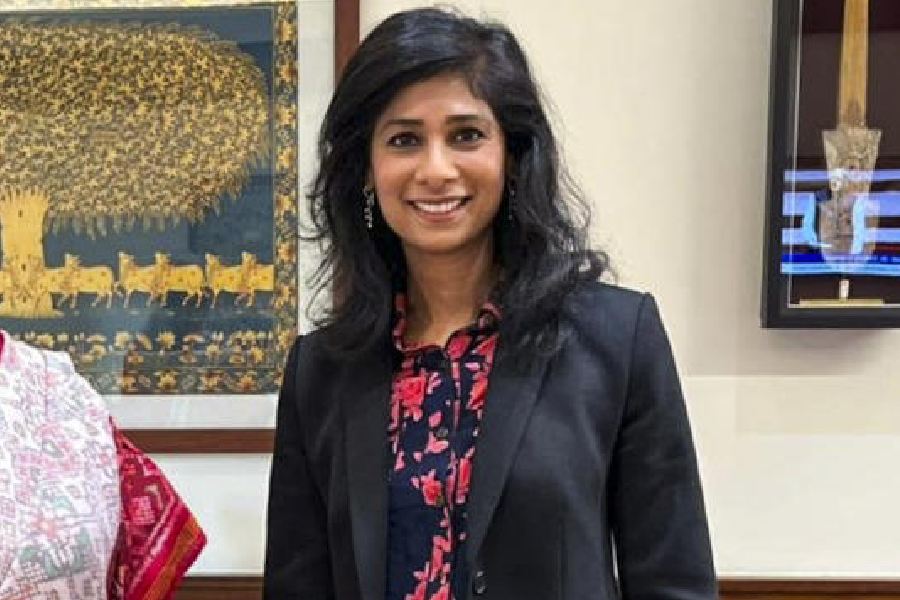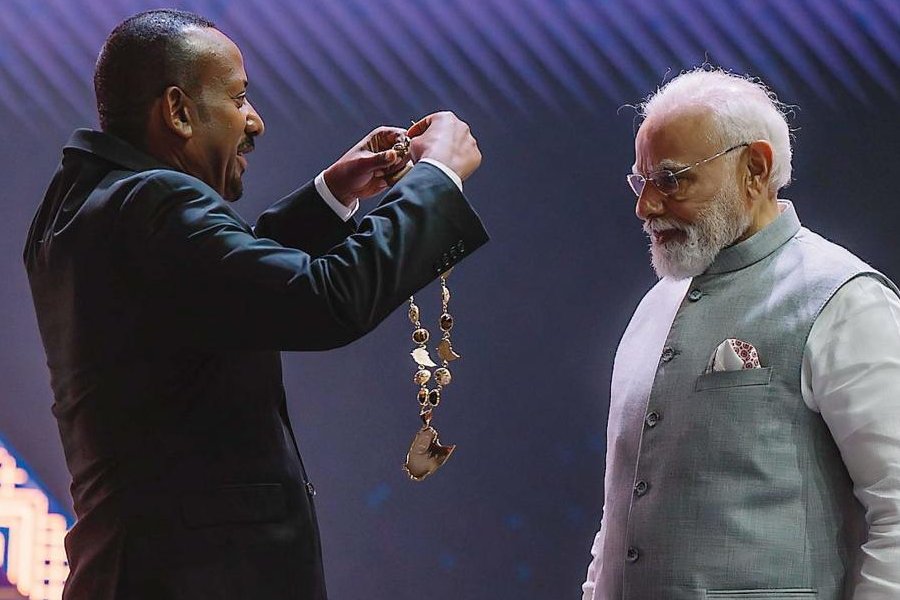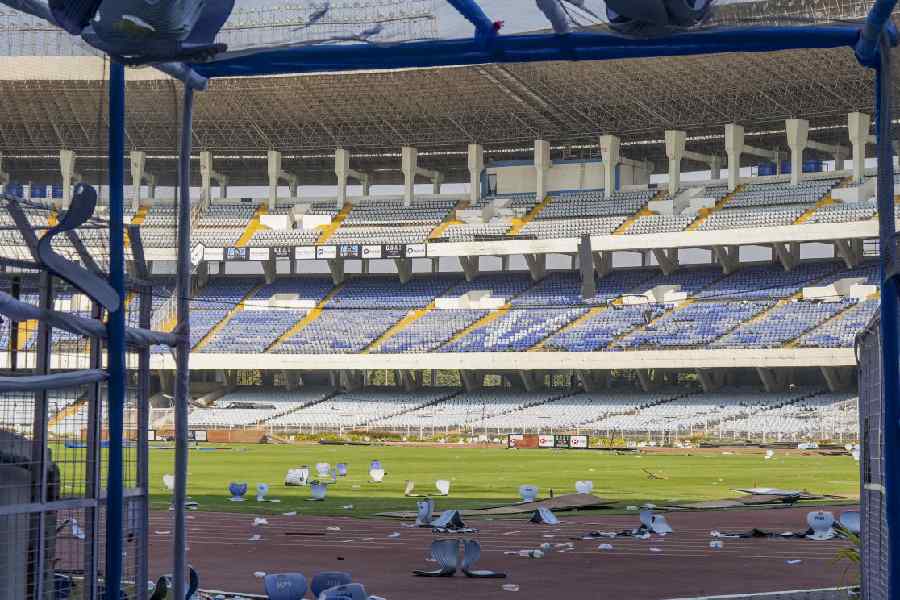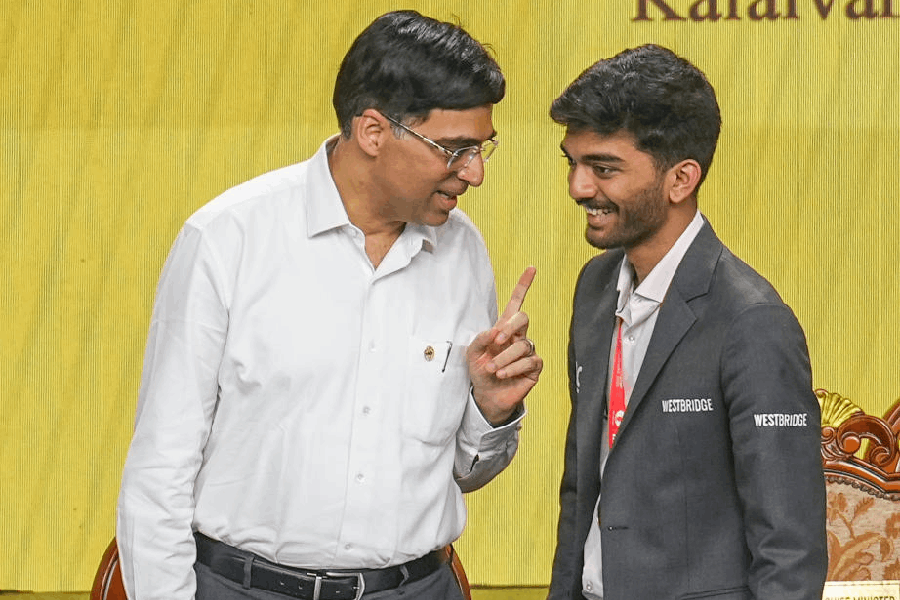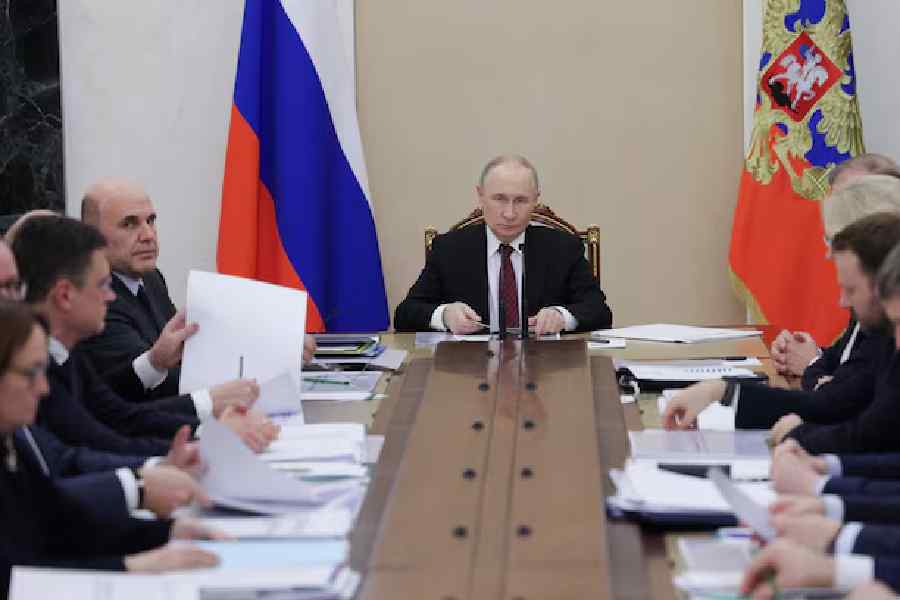 |
| Master strokes: Satyajit Ray and his illustrations |
A slice of cinematic history is on display. From scripts and scribbled notes to costume design, they highlight the mind and working methods of one of India’s most celebrated directors — Satyajit Ray.
Five maps, alas, haven’t travelled from Calcutta to Mumbai. But Ray’s son, filmmaker Sandip Ray, fondly remembers the aerial maps which his father used for his 1962 film Kanchenjungha, his first colour film.
“Kanchenjungha was baba’s first original screenplay and he had initially planned to shoot it in a bungalow outside Calcutta. But later he thought Darjeeling would be more visually exciting. Having spent many summers there, he was familiar with the picturesque hill station and had made five aerial maps before he left for the shoot,” Sandip Ray says.
Armed with the maps, the master-director knew exactly where to shoot when it was foggy, with the Himalayas and the film’s characters shrouded in mist. And when the sun peeked out, shining bright and illuminating the sifting relationships within the families that the film centred on, he moved to another location.
“He wanted to capture the play of light and shade. Prints of the maps were hung up in the rooms of every member of the cast and crew so we knew where we’d be stationed depending on the weather,” the son, barely eight when the film was shot, recalls.
 |
The maps, which were later analysed and described as accurate, came in handy during the 26-day schedule. “Rain, sun or mist, we did not lose a single day of shooting,” he says. But a Bollywood film being shot then — F.C. Mehra’s Professor — waited endlessly for the fog to clear, he adds.
When Ray’s crew ran out of stock, the director approached Professor’s leading man, Shammi Kapoor, who readily came to their rescue, pointing out wryly that they hadn’t done much shooting while Ray already had his reels in the cans.
“Those maps are not among the 35-40 exhibits,” says Arup De, CEO, Society for the Preservation of Satyajit Ray Archives. But Ray aficionados can see a title card of Kanchenjungha designed by the director at the exhibition to be held at Mumbai’s Ravindra Natya Mandir from February 15 to17.
The event includes set and costume designs, ad campaigns, handwritten scripts with sketches, illustrations, stills and candid snapshots that showcase Ray, the artist.
“Some of these bits of cinematic history — which is our job to conserve, restore and distribute — have travelled to France, Spain and Canada. It’s the first time they’ll be seen anywhere in India outside Calcutta,” says De.
The exhibition also looks at Ray’s life before he turned to filmmaking. He began his career as a junior visualiser in a British-run advertising agency, DJ Keymer, in 1943, on a monthly salary of Rs 80. Some of the ad campaigns he designed will also be on show. “There’s the ad for Chelsea — the cigarette that cheers — and Jabakusum hair oil for desi Rapunzels,” says De.
He points out that in their layouts and the use of calligraphy, these graphic designs moved away from the popular Western style of the time towards a more Oriental form of art that Ray had come to appreciate during his student days at Santiniketan.
Later, Ray moved to Signet Press, a publishing house started by D.K. Gupta, where he designed book covers and illustrations for Jibanananda Das’s Banalata Sen, Jawaharlal Nehru’s Discovery of India and a children’s version of Bibhutibhushan Bandopadhyay’s Pather Panchali titled Aam Antir Bhepu.
 |
“It was this children’s book that inspired his first film Pather Panchali in 1955. Those illustrations translated into an elaborate storyboard and became shots,” Sandip Ray says.
Some book jackets and illustrations will also be on display, along with a handwritten script of Shatranj Ke Khiladi (1977), Ray’s first Hindi film. “For this film, we went on an extensive recce through Hyderabad and Lucknow. Baba took hundreds of photographs of the period architecture,” recalls the son.
Ray worked closely with his art director Bansi Chandragupta and some of his set designs were veritable works of art. Sandip points out that the Nimtita palace, where they filmed Jalsaghar (1958), did not have a music room. Many, even today, find it difficult to believe that the music room around which the film revolved came out of Ray’s imagination.
Perhaps they will be convinced when they see the sketch of Feluda’s living room from Sonar Kella (1974) that is one of the exhibits,” De says.
Just how good an artist Ray was is evident in the storyboard of Goopy Gyne Bagha Byne (1969), particularly in the six-and-a-half-minute bhooter nach — dance of the ghosts — that was the highlight of the film.
“Baba had a different shooting script and exercise book for the bhooter nach... He spent a lot of time planning everything, from the costumes and make-up to the choreography and music... He even gave the voiceover for the King of the Ghosts,” says Sandip. De is hopeful of bringing one of those ink illustrations for the show.
According to Pabak Chatterjee, executive president of the Presidency College Kolkata Alumni Association who has joined hands with the Ray Society to bring this exhibition to Mumbai, another eye-catching exhibit is a photograph of the actor Uttam Kumar clicked by Ray.
The picture of the superstar was taken when he travelled with Ray to Berlin and Rome with their film Nayak (1966).
“Maybe someday at another exhibition, you’ll get to see some of the photographs baba took of ma (Bijoya Ray) and me during family vacations,” Sandip says. And perhaps, if we are lucky, we’ll see the aerial maps too.


